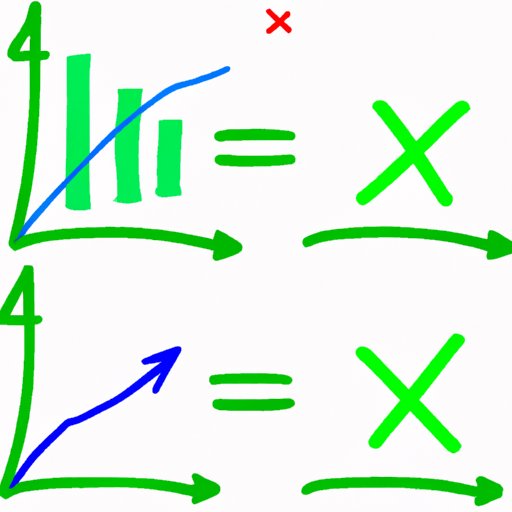Introduction
Slope is a fundamental concept in mathematics that describes the steepness or incline of a line or a curve. It plays a crucial role in understanding and analyzing various types of data, such as graphs, maps, and real-life situations. In this article, we will cover the basics of finding slope, explore real-life applications of slope, discuss different methods of calculating slope, identify common mistakes to avoid, and explain how to interpret slope in different contexts.
The Basics of Finding Slope
Slope is defined as the change in y divided by the change in x between two points on a graph. Mathematically, we can represent slope as:
Slope = (y2 – y1) / (x2 – x1)
We can find the slope of a line on a graph by choosing two points on the line and applying the formula. The slope will indicate the rate at which the y-coordinate changes relative to the x-coordinate.
For instance, if we choose the points (1, 2) and (3, 4) on a graph, the slope will be:
Slope = (4 – 2) / (3 – 1) = 2 / 2 = 1
We interpret this as: for each unit increase in x, the corresponding y-value increases by 1.
Real-Life Applications of Slope
Slope has various applications in different fields, including engineering, construction, physics, geography, and economics. For instance, architects use slope to design buildings with effective drainage systems and stable foundations. Civil engineers use slope to calculate the optimal angles for roads, bridges, and retaining walls to withstand external forces such as wind and earthquakes. Geographers use slope to map out the terrain of a region, identify landforms, and analyze the potential for natural disasters such as landslides.
Moreover, slope is often used in measuring and interpreting real-life scenarios, such as sports performance, sales data, and weather patterns. For example, sports analysts use slope to evaluate the improvement of athletes over time based on their scores, time, or distance. Sales managers use slope to forecast revenue trends and adjust marketing strategies accordingly. Meteorologists use slope to predict the rate of change in temperature, precipitation, and other weather variables.
Different Methods of Finding Slope
There are various methods of finding slope, depending on the type of data and the level of accuracy required. Some of the most common methods include using a graphing calculator, the slope-intercept formula, and the rise-over-run formula.
Using a graphing calculator is the easiest and most accurate method of finding slope. It involves inputting the coordinates of two points into a graphing calculator, which then calculates the slope automatically. The slope-intercept formula, on the other hand, is useful when working with linear equations. The formula is y = mx + b, where m is the slope and b is the y-intercept. By rearranging the formula, we can calculate the slope by dividing the coefficient of x by the constant term.
The rise-over-run formula involves dividing the vertical rise between two points by the horizontal run. This formula is useful when working with points on a graph that are not integers or when we need a quick estimate of the slope.
Common Mistakes to Avoid
When finding the slope of a graph, there are several common mistakes that people make. One of the most common mistakes is confusing the coordinates of the two points, which can lead to an incorrect calculation of the slope. Another mistake is not simplifying the slope to its lowest possible terms, which can result in a misleading interpretation of the data. Additionally, using different scales for the x-axis and the y-axis can also affect the accuracy of the slope.
To avoid these mistakes, it is important to double-check the coordinates of the points, simplify the slope, and ensure that the graph is scaled correctly.
How to Interpret Slope in Different Contexts
Slope can mean different things in different contexts. For example, in linear equations, slope represents the rate of change of the dependent variable with respect to the independent variable. In maps, slope represents the angle of the terrain, where steeper slopes indicate higher elevations. In real-life situations, slope can represent the growth rate, the speed of change, or the efficiency of a process.
Interpreting slope correctly is essential in gaining a deeper understanding of the data and making informed decisions. For example, in business, slope can help managers identify the optimal pricing strategy, sales target, or production level. In science, slope can help researchers analyze the impact of different variables on the outcome of an experiment.
Conclusion
In conclusion, finding the slope of a graph is a crucial skill in mathematics and numerous fields. By understanding the basics of finding slope, exploring real-life applications, and using different methods to calculate slope, we can gain valuable insights into data and make informed decisions. Additionally, avoiding common mistakes and interpreting slope correctly in different contexts can help us analyze trends, predict outcomes, and optimize performance.
